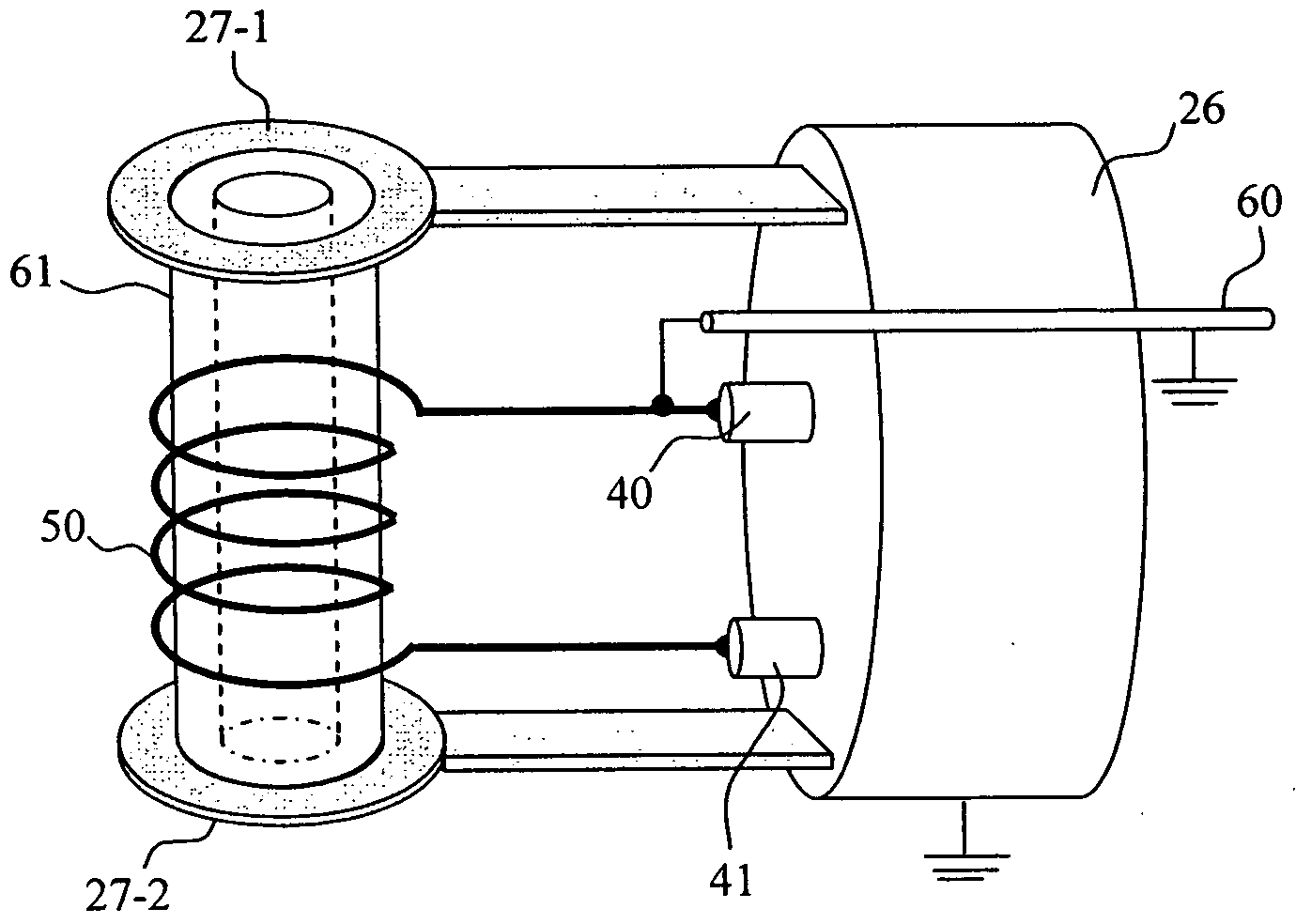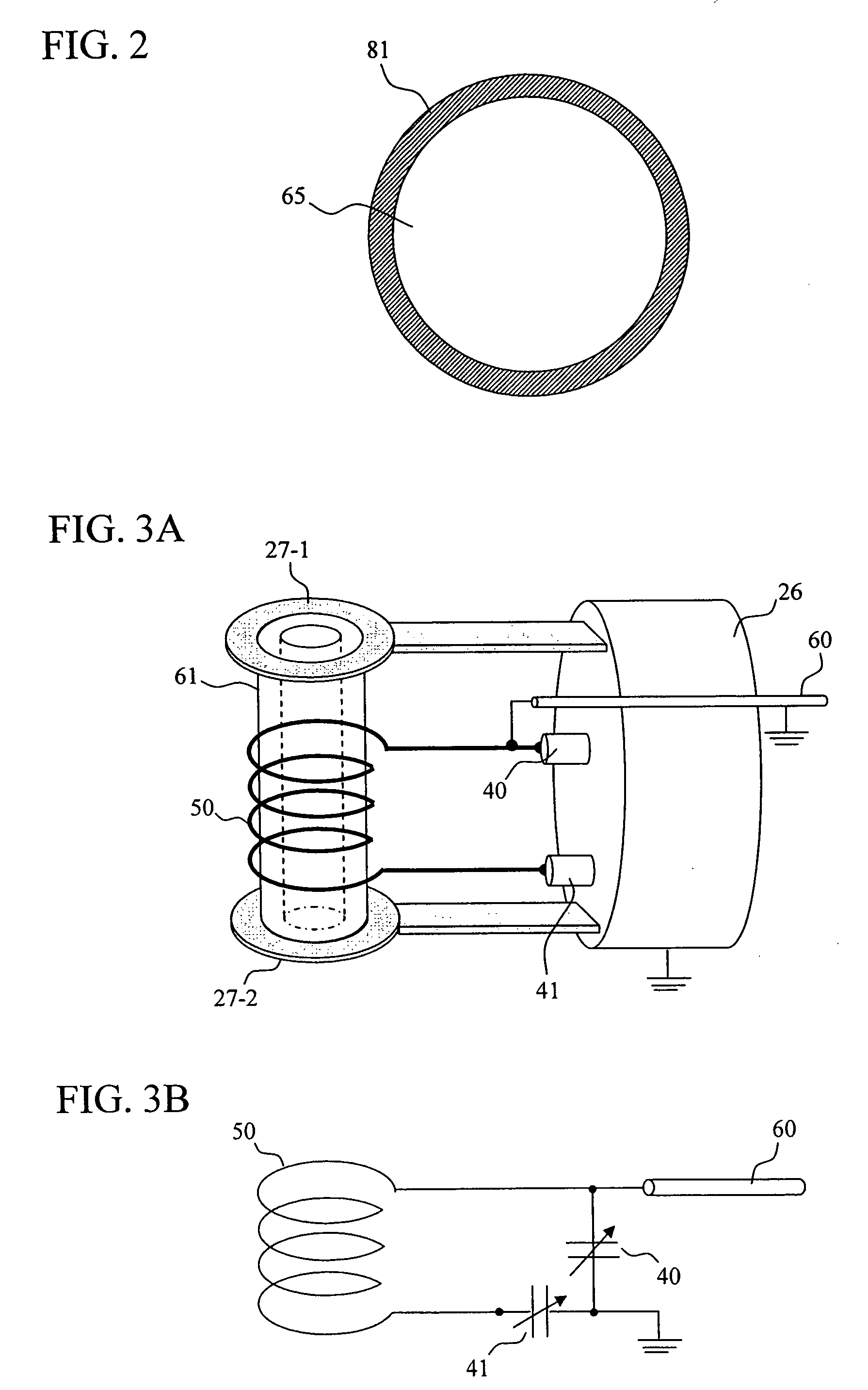NMR spectrometer
a spectrometer and nuclear magnetic resonance technology, applied in the field of nuclear magnetic resonance spectrometers, can solve the problems of affecting the sensitivity of nmr spectrometers, affecting the sensitivity of spectrometers, and affecting the application of high-sensitivity nmr spectrometers, so as to improve the q factor, reduce the resistance of the entire antenna, and improve the effect of the effect of the effect of the effect of the resistance loss
- Summary
- Abstract
- Description
- Claims
- Application Information
AI Technical Summary
Benefits of technology
Problems solved by technology
Method used
Image
Examples
first embodiment
[0030]FIG. 1A is a perspective view showing the general configuration and arrangement of a principal constituent part of an NMR spectrometer to which the present invention is applied. Two separate superconducting magnets 10-1 and 10-2 produce a uniform magnetic field (that is, a uniform static magnetic field) 11 along the central axis. This uniform magnetic field 11 is indicated by the arrow B0 in FIG. 1A. A sample tube 30 with a sample 31 housed therein is inserted from a direction perpendicular to the uniform magnetic field (e.g., the direction of the x-axis in FIG. 1A). A cryogenic probe 20 incorporating a solenoidal-shaped probe antenna 25 that detects a signal from the sample 31 is inserted in the same direction as that of the uniform magnetic field. The cryogenic probe 20 is constituted of the probe antenna 25, a heat exchanger 22, a cold gas line 37, a probe tip stage 26, and a probe housing 23. The heat exchanger 22 is provided at the end portion of a cryocooler 29 that acts...
second embodiment
[0041]The second embodiment proposes an NMR spectrometer including a solenoidal-shaped probe antenna, as in the case of the first embodiment. The second embodiment uses a different antenna circuit configuration from that of the first embodiment. The basic configuration of the spectrometer, and the structure of the wire for the antenna coil are the same as those of the first embodiment shown in FIGS. 1A and 1B and FIG. 2.
[0042]FIG. 4A is a perspective view schematically showing the solenoidal-shaped antenna coil according to the second embodiment mounted on the cryogenic probe 20. FIG. 4B is a view schematically showing an electrical connection of the probe antenna. A Cu wire for 1 mm diameter is wound four turns to be formed into a solenoidal-shaped antenna coil 50. Then, a tap lead 45 made of a Cu wire for 1 mm diameter is connected to a substantially middle point of the antenna coil 50 by a pulse heat bonding method. Thereafter, a superconducting magnesium diboride (MgB2) thin fil...
third embodiment
[0050]The third embodiment proposes an NMR spectrometer including a solenoidal-shaped probe antenna constituted of a plurality of antenna coils connected to each other. The basic configuration of this spectrometer is the same as those of the first and second embodiments. A wire used for each probe antenna has a structure in which a superconducting layer is formed on the surface of a metal wire as shown in FIG. 2, as in the cases of the first and second embodiments.
[0051]FIG. 5 schematically shows electrical connection of the solenoidal-shaped probe antenna according to the third embodiment. A Cu wire for 1 mm diameter, which is a base material for the wire for each antenna coil, is wound two turns to be formed into the solenoidal-shaped antenna coil. Then, a superconducting magnesium diboride (MgB2) thin film of 1 μm thickness is formed on the surface of the antenna coil by evaporation method. Two two-turn antenna coils 50-1 and 50-2 thus fabricated are disposed to positions where t...
PUM
 Login to View More
Login to View More Abstract
Description
Claims
Application Information
 Login to View More
Login to View More - R&D
- Intellectual Property
- Life Sciences
- Materials
- Tech Scout
- Unparalleled Data Quality
- Higher Quality Content
- 60% Fewer Hallucinations
Browse by: Latest US Patents, China's latest patents, Technical Efficacy Thesaurus, Application Domain, Technology Topic, Popular Technical Reports.
© 2025 PatSnap. All rights reserved.Legal|Privacy policy|Modern Slavery Act Transparency Statement|Sitemap|About US| Contact US: help@patsnap.com



